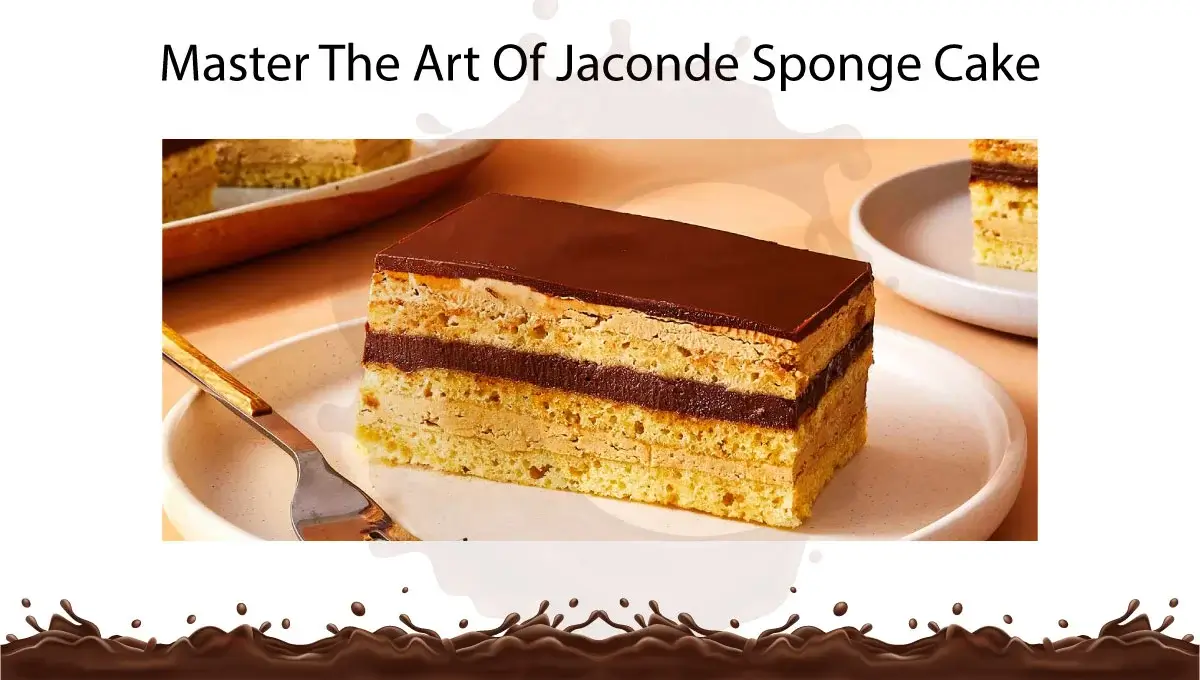Introduction
When it comes to the world of pastries and cake decorating, the Jaconde sponge cake stands out as a versatile and elegant canvas for layering flavors and showcasing culinary skill. This blog post aims to guide enthusiastic bakers, dessert lovers, and food bloggers through the intricate beauty of the Jaconde sponge cake.
It contains its history, key characteristics, ingredients, baking process, and tips for a successful creation. Whether for a special occasion or to simply indulge in a slice of gastronomic delight, mastering the art of Jaconde sponge cake offers a wonderful adventure in the culinary arts.
Origins Of Jaconde Sponge Cake
The Jaconde sponge cake is said to have originated in France, with a name that hints at its aristocratic ties. Its history is somewhat elusive, intertwined with the apogee of French patisserie. The cake is shellacked with the elegance of Paris from a bygone era, gracing the courts and salons of yesteryears’ elite. The debate around its exact origins only adds to its mystique, with some attributing it to the royal tables of Marie Antoinette.
Decoding The Flavors And Textures
Imagine a cake with a rich almond flavor, tinged with the sweetness of sugar and the warmth of a velvety buttery crumb. The Jaconde sponge cake offers just that – a light, airy texture that is both flavorful and delicate. Its high egg and almond content lends it a nutty essence, perfect for layering with creams and mousses, yet sturdy enough to stand alone.
Ingredients For Jaconde Sponge Cake

The elegance of the Jaconde sponge cake comes from its simplicity and the quality of ingredients used. Here’s what you need to make this exquisite dessert:
- Almond Meal/Flour: 1 cup (100g) – the key to its distinct flavor and texture.
- Powdered Sugar: 1 cup (100g) – for sweetness and a fine crumb.
- All-Purpose Flour: 1/3 cup (40g) – provides structure to the cake.
- Eggs: 4 large – adds richness and acts as a leavening agent.
- Egg Whites: 4 large – to create a light and airy texture.
- Granulated Sugar: 1/4 cup (50g) – stabilizes the egg whites.
- Unsalted Butter: 2 tablespoons (30g), melted – for moisture and a velvety texture.
- Vanilla Extract: 1 teaspoon (5ml) – enhances the flavor profile.
Ensure all ingredients are at room temperature to facilitate a smoother mixing process and deliver a more homogeneous cake batter.
The Baking Process Of Jaconde Sponge Cake
Making a Jaconde sponge cake is about creating multiple thin layers of batter that are baked on a sheet pan before being assembled into a final masterpiece. It requires attention to detail, from folding the ingredients in the right order to baking at the correct temperature for the right amount of time.
- Preheat oven to 350°F (180°C) and line a half-sheet pan with parchment paper.
- Using a stand mixer, beat together almond flour/meal, powdered sugar, all-purpose flour, eggs, egg whites, granulated sugar, melted butter, and vanilla extract until smooth.
- Spread the batter thinly and evenly onto the prepared pan using an offset spatula.
- Bake for about 8-10 minutes until the cake is just set and lightly golden.
- Remove from the oven and let it cool in the pan for a few minutes before transferring to a cooling rack.
- Once cooled, carefully remove the parchment paper and cut into desired shapes for layering or serving as is.
Proudly display your Jaconde sponge cake masterpiece as a standalone indulgence or use it as a base for your favorite fillings.
Tips For Perfecting Your Jaconde Sponge Cake
- Fold Gently: When incorporating the dry ingredients into the egg mixture, do so gently and in small batches to prevent deflating the egg whites.
- Measure Accurately: Use a kitchen scale to measure ingredients accurately, especially the almond flour and powdered sugar.
- Use Parchment Paper: Lining your pan with parchment paper makes it easier to remove the cake once baked.
- Bake Quickly: The Jaconde sponge cake is delicate and can easily overbake. Keep an eye on the oven while it’s baking and remove promptly when done.
- Experiment with Fillings: The Jaconde sponge cake is versatile and pairs well with a range of fillings, from fruit to chocolate to cream. Get creative and experiment with different combinations to discover the perfect match.
Conclusion
In conclusion, the Jaconde sponge cake is a canvas upon which a symphony of flavors and textures can be painted. It is as much a delight to create as it is to savor, and its versatility makes it an indispensable tool in any pastry aficionado’s repertoire.
By understanding the history, techniques, and variations of the cake, one can truly appreciate the artistry and skill that goes into crafting this French delicacy. Whether novice baker or experienced chef, the journey to mastering the Jaconde is a learning experience that culminates in the sweet triumph of a beautifully baked cake.


